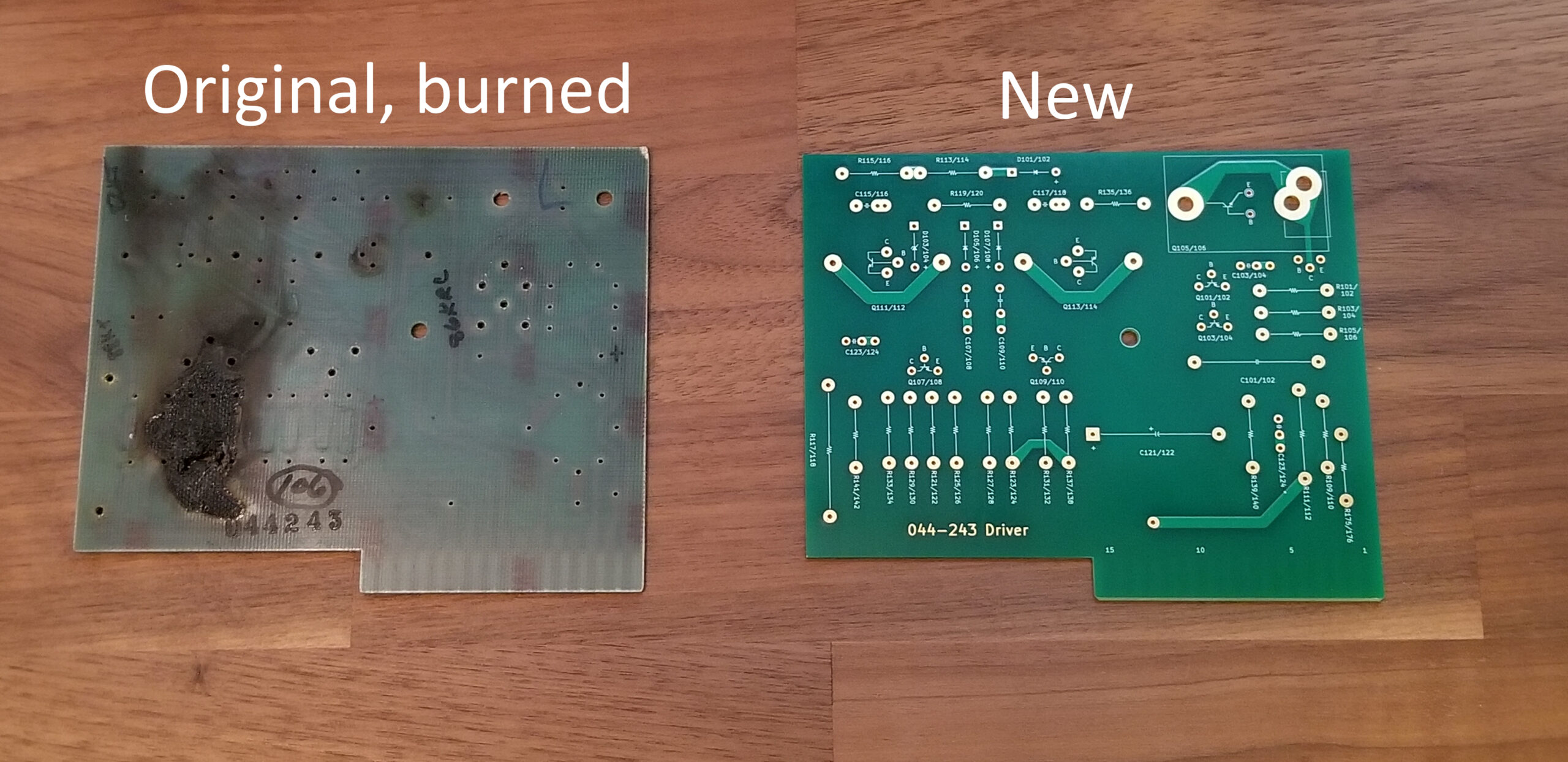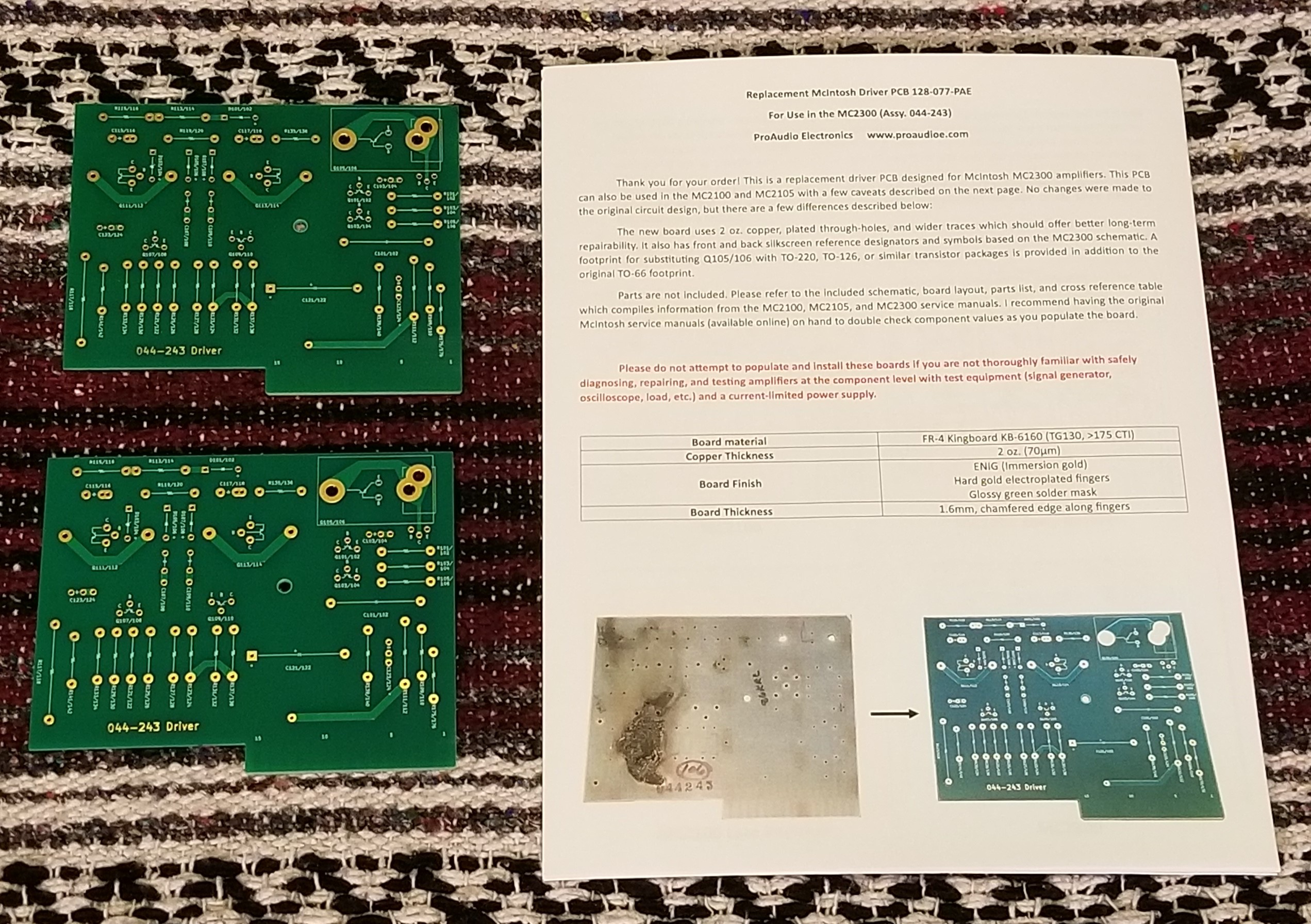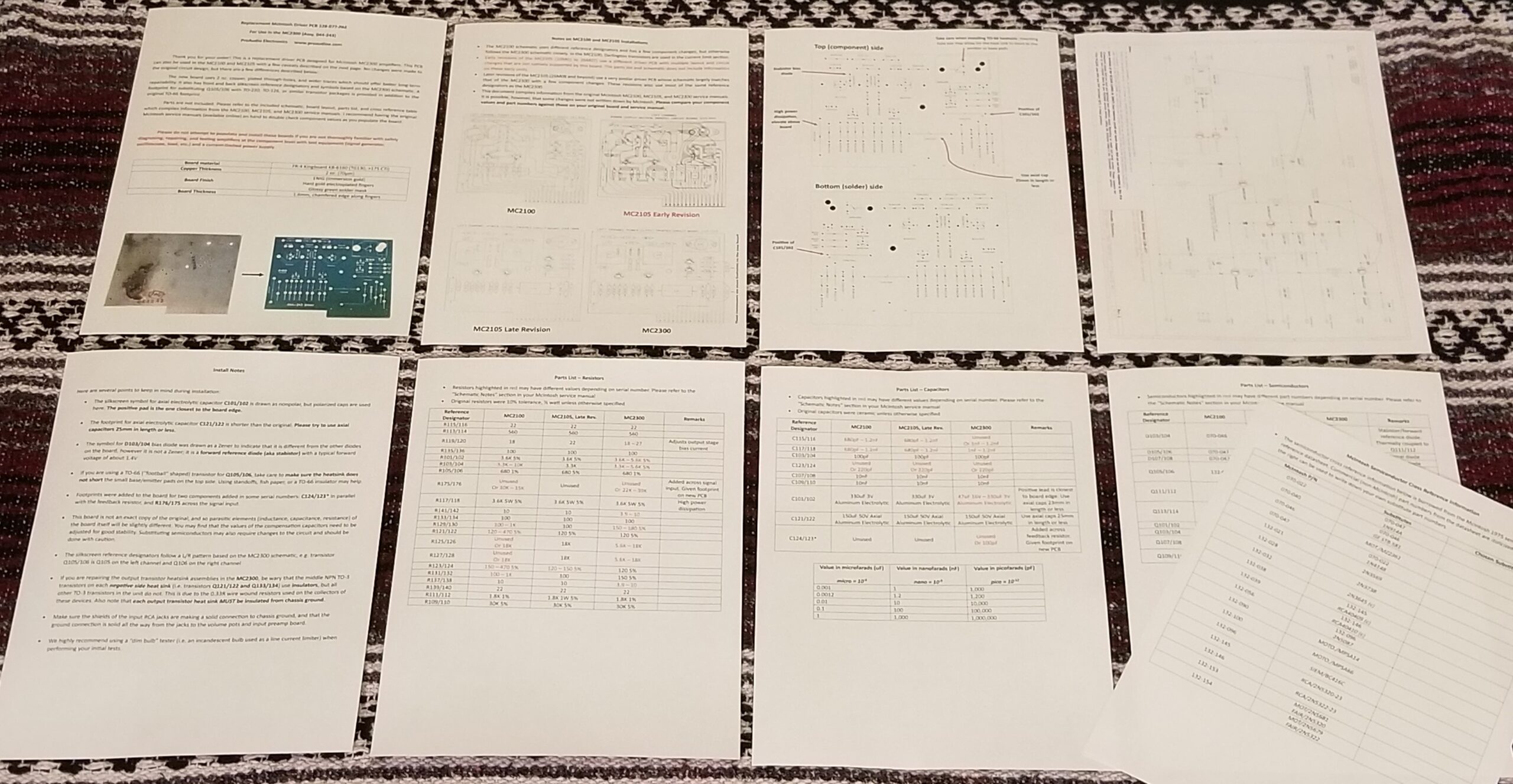128-077-PAE
Click the link below to download the installation guide
March 2024: These boards are currently out of stock, however we are working on a revision that will use all modern-production semiconductors and an improved circuit design.
These PCBs are intended to replace damaged driver boards in the McIntosh MC2300 amplifier. The PCB itself was also used in other models such as the MC2100 and late-revision MC2105 units, and the new board should work in these models with some component changes. Bear in mind that the silkscreen reference designators/symbols are based on the MC2300 schematic, which largely matches the schematic of late-revision MC2105 units, but does not match the schematic of the MC2100. Early revision MC2105 units (s/n 10M01 to 26M07) used a slightly different PCB with multiple circuit and layout changes that would require modifications to the board to implement.
Includes two unpopulated PCBs, four TO-39 spacers, and a thorough install guide with re-drawn schematic, board layout, and parts list.
Please do not attempt to populate and install these boards if you are not thoroughly familiar with safely diagnosing, repairing, and testing amplifiers at the component level with test equipment (signal generator, oscilloscope, load, etc.) and a current-limited power supply.
Here are the main differences between this board and the original:
- Plated through-holes, wider traces, 2 oz. copper with ENIG (gold) finish and hard-gold plated fingers (better long-term repairability)
- Silkscreen with reference designators and symbols based on the MC2300 schematic
- Footprint for the TO-66 (“football” shaped) transistor Q105/106 has pads for substituting it with a TO-220, TO-126, or similar package transistor
- All original wire jumpers (driver collectors and feedback line) are implemented on the board as traces
- A footprint is provided for the compensation cap that was put in parallel across the feedback resistor in some revisions (labeled C123/124*), as well as the resistor across the driver input (R175/176)
- Two different lead spacings are provided for the ceramic disc cap footprints
- Diode footprints use square pads for the negative terminals and polarized electrolytic capacitors use square pads for the positive terminals
- Chamfered board edge around the fingers
- Footprint for axial electrolytic capacitor C121/122 is a bit shorter than the original; please use axial caps around 25mm in length or less. C101/102 is the same length as the original; use axial caps 23mm in length or less.
Specifications:
- Board material: FR-4 Kingboard KB-6160 (TG130, >175 CTI)
- Copper thickness: 2 oz.
- Board finish: ENIG (immersion gold), hard-hold plated fingers, glossy green solder mask
- Width: 127.45 mm
- Length: 105.10 mm
- Thickness: 1.6 mm
Other Notes:
- The PCB follows the general layout of the original, and no changes were made to the schematic, but it is not an exact replica. The parasitic elements of the board itself (inductance, capacitance, resistance) will thus be slightly different from the original board, and you may find that the values of the compensation capacitors need to be slightly adjusted for good stability. Substituting semiconductors may also require changes to the circuit and should be done with caution.
- C101/102 on the silkscreen was drawn as a nonpolar cap, but polarized caps are typically used here. The positive terminal is the pad closest to the edge of the board.
- The symbol for D103/104 bias diode was drawn as a Zener to indicate that it is not an “ordinary” diode, however it is not a Zener; it is a stabistor/forward reference diode with a typical forward voltage of around 1.4V (see service manual/semiconductor datasheet).
- If using a TO-66 device for Q105/106, take care when installing the heatsink because the base/emitter leads have small pads on the top of the board that could touch the heatsink (i.e. collector) due to the size of the mounting holes. Using short standoffs, fish paper, or a TO-66 insulator underneath can help here.
- The silkscreen reference designators follow a L/R pattern, so transistor Q105/106 is Q105 on the left channel and Q106 on the right channel.
If you are interested, please contact us.



